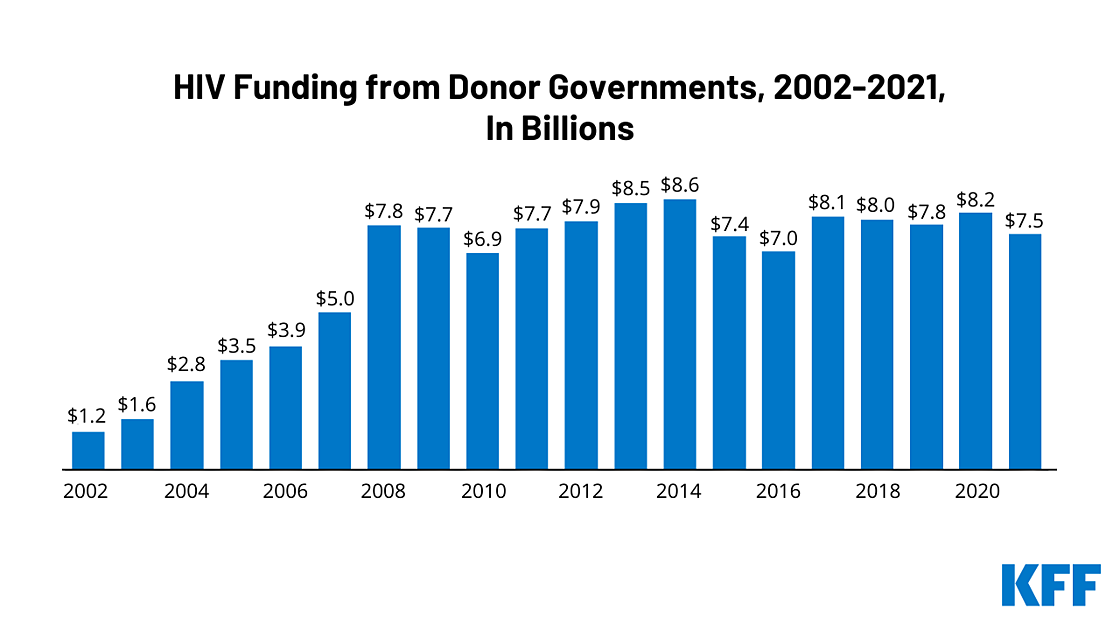
The independent source for health policy research, polling, and news.
Donor Governments Spent US$7.5 Billion on Efforts to Combat HIV/AIDS Globally in 2021, Largely Flat Amid the COVID-19 Pandemic, KFF-UNAID Report Finds
A new report from KFF (Kaiser Family Foundation) and The Joint United Nations Programme on HIV/AIDS (UNAIDS) finds that donor governments disbursed US$7.5 billion in 2021 to combat HIV in low- and middle-income countries, largely flat amid the COVID-19 pandemic and essentially matching 2008 levels, against a backdrop of growing inflation and shrinking funding from other sources.
While the total is less than in 2020, that largely occurred due to the timing of payments from donor nations to the Global Fund to Fight AIDS, Tuberculosis and Malaria, and not a reduction in support.

Donor governments’ bilateral aid – provided directly to specific countries, rather than to the Global Fund or other multilateral organizations – was US$5.5 billion in 2021, a slight decline compared to US$5.6 billion in 2020, continuing a decade-long trend of decreasing bilateral support.
The United States continues to be the largest donor to HIV, providing US$5.5 billion in support (73% of all donor government funding), followed by the United Kingdom (5% or US$385 million). Other major donors include, Germany (US$246 million), the European Commission (US$232 million), and France (US$231 million).
“This report confirms a decade of decline in donor aid for HIV. As the COVID-19 and Ukraine crises have dramatically increased the needs of low and middle-income countries and decreased the domestic revenues for the coming years, a stepping up of donor aid is even more vital,” said Winnie Byanyima, Executive Director of UNAIDS. “Aid for the AIDS response is a smart and effective investment. Now is the time for donors to be courageous and deliver on the common pledge to end AIDS by 2030.”
“While donor government funding for HIV has been relatively stable during the global COVID-19 pandemic, there’s a lot of uncertainty about whether funding will keep pace with global inflation amid other priorities,” KFF Senior Vice President Jen Kates said.
The funding supports HIV care and treatment, prevention, and other services in low- and moderate-income countries. The data are included in a broader UNAIDS global report, which examines all sources of funding for HIV relief, including local governments, non-governmental organizations, and the private sector.
The new report, produced as a long-standing partnership between KFF and UNAIDS for more than 15 years, provides the latest data available on donor government funding based on data provided by governments. “Donor government funding” refers to disbursements, or payments, made by donors.
